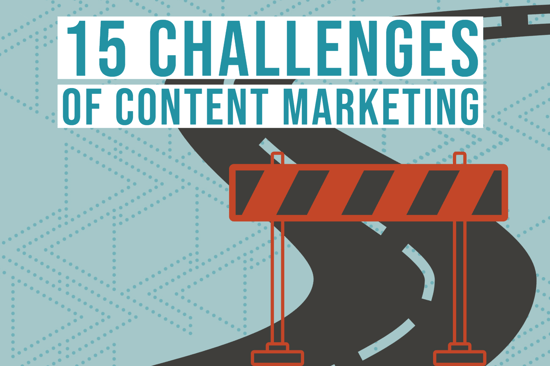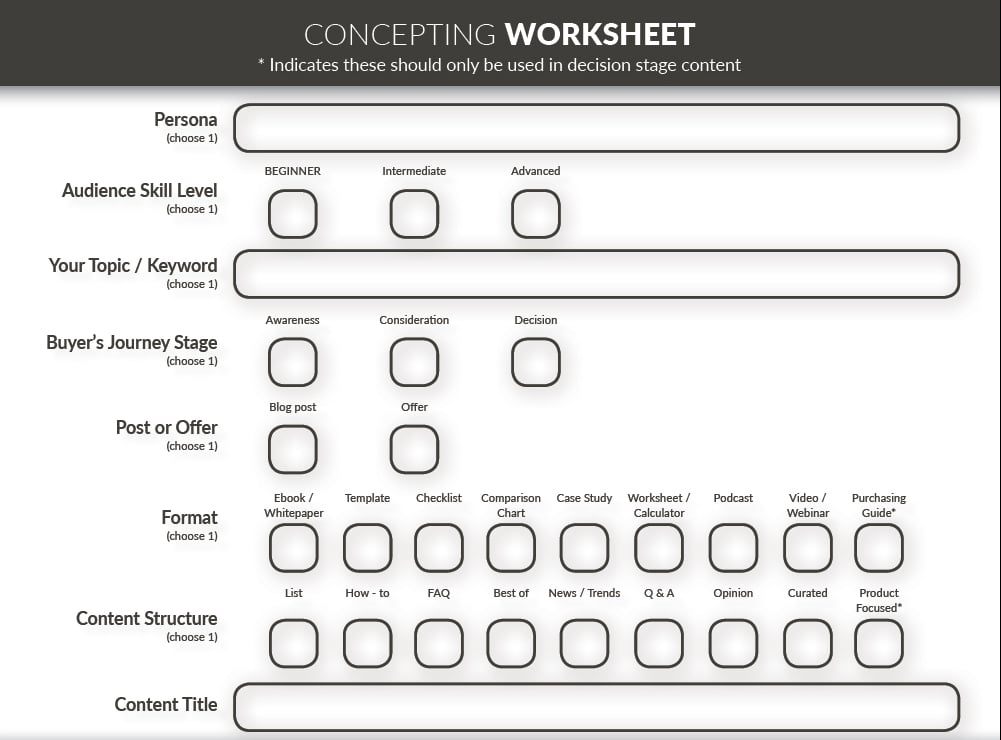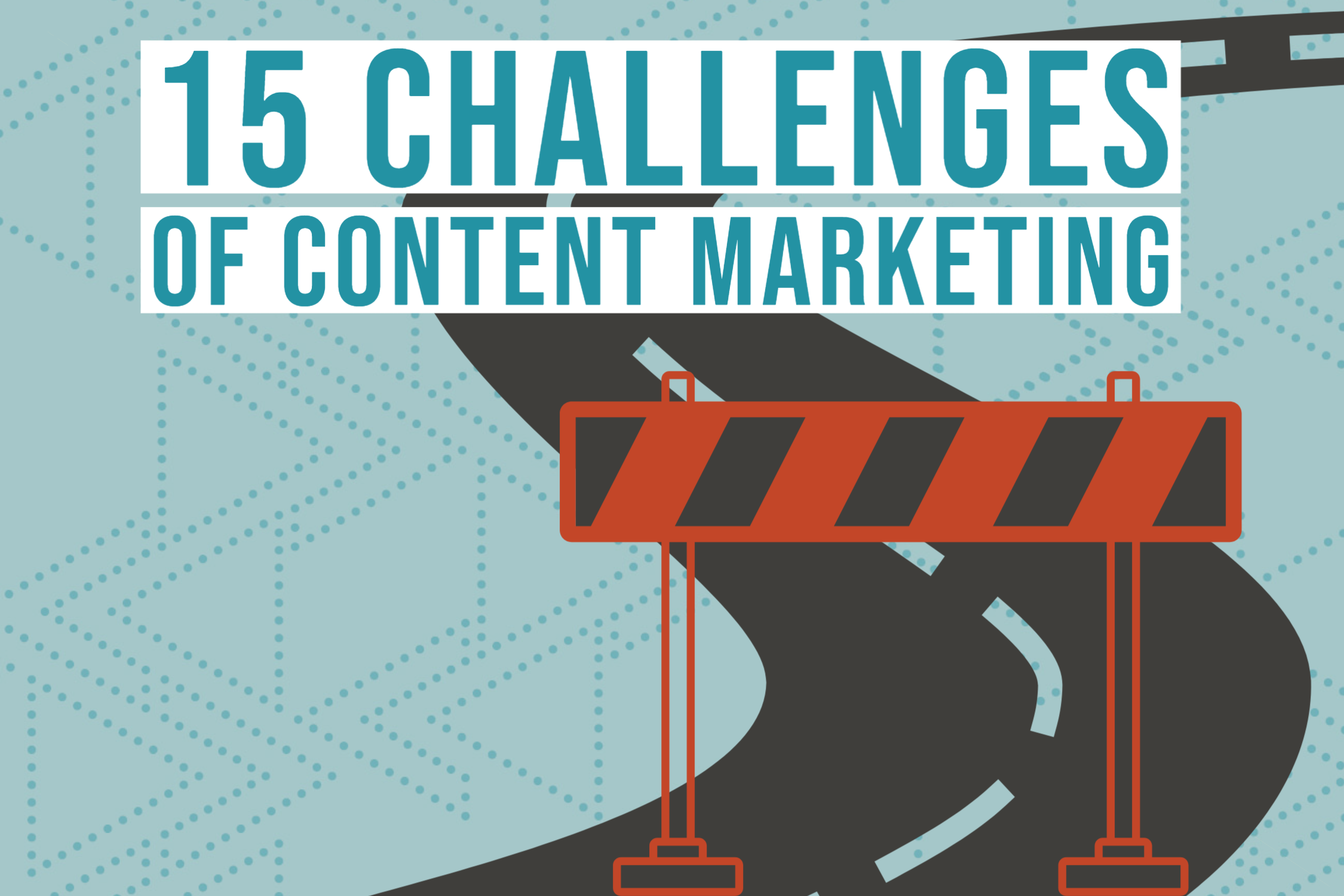How Could An Agency Partner Help You?

Developing and implementing a complete content marketing strategy that delivers results comes with its share of challenges, as Semrush discovered in a survey of nearly two thousand marketing pros. When asked what they found the most challenging and time consuming tasks, the answers ranged from developing content that resonates with the target audience to finding places to publish their content.
In the infographic below, they break down those challenges by role: strategist, content creator, PR/marketing manager, editor and project manager. In some organizations, those roles may all be held by just one or two people; even if you have a full marketing staff, these challenges may still leave gaps you have difficulty bridging. That is where a full-service integrated PR and marketing agency can come to your aid, providing the specific skills and expertise needed to overcome the challenges.

Are you struggling with any of these gaps in your marketing team’s abilities?
Check out these blog posts and resources for helpful tips and tools, or talk with us about how we may be able to help:
Content Marketing Challenges (And Solutions):
1. Developing content pieces that resonate with the target audience. One key tool to understanding your target audience and developing content that is relevant to your audience’s needs is a buyer persona. A buyer or customer persona is a fictionalized, generalized representation of your ideal customer(s) that includes characteristics such as demographics, job title, and pain points. This blog post outlines 10 questions to answer about your ideal customer and a download sample of a complete customer persona to use in guiding your own development of personas. You will likely have more than one, including both decision makers and influencers you intend to reach with your content.
2. Developing an ROI plan. Marketers routinely cite proving the ROI of their efforts as a key challenge. We believe one of the keys to being able to prove the ROI of your marketing strategy is to start with concrete goals that align with corporate objectives. By doing the math first, you know precisely what your content needs to achieve. (This video will walk you through our method.)
3. Finding and researching the most prominent topics. If you need to understand the conversation in the larger marketplace — what is being talked about, in what way, and by whom — the solution is through an audit. There are several types of audits that you may consider, but two of the most important in the public relations and marketing strategy development stage are a media and public relations audit and a messaging and positioning audit. Download our Media, Messaging and Marketing Audit checklist for a detailed look at what you should expect any agency to provide from an audit in order to guide your strategy development.
4. Finding a balance between the creative element and search optimization in content. The key to remember here is that SEO is no longer the keyword-stuffing that might have been accepted a decade or two ago. Algorithms are more sophisticated, as are readers. So the key to SEO is write for readers first.
5. Understanding the target audience and its problems. See #1 above: personas! Also, check these posts for more suggestions: 6 Ways To Pinpoint Customer Pain Points For Marketing Content Ideas, Segment Content Based on Personas and the Buying Cycle, and a free worksheet for mapping content to your buyer personas.
6. Keeping track of deadlines and time management. Sometimes it helps to have the right tools for planning and tracking your work, who is responsible for what, and how long each project should take. Here are a few free templates that we have created for our own planning and management: Campaign Planning Calendar Template, Blog Calendar Template, HubSpot Implementation Timeline & Template and Consumer Survey Development Process Template.
7. Defining the ROI of campaigns/activities. As I said in #2 above, it starts with doing the math to determine your targets. Then you have to track metrics and analyze them on a regular basis to make adjustments as you go. More resources:
8. Deciding what to write about. Again, refer to points 1, 3 and 5 above. Still need more inspiration? Check out this package of templates for writing five different types of blog posts, then revisit ideas for spicing up your business blog, and content types to use for each level of the sales funnel:
9. Finding a place to publish content. Assuming you have already covered the basics of publishing a business blog on your brand’s own website (check our list of blog resources for free downloads, plus a wealth of blog-oriented marketing advice throughout our 5 years of our own business blog), there are still other options to consider. One of our favorites, and a PR tool that ties well into integrated marketing campaigns, is the contributed article. Contributing bylined articles, credited to your company executives, is a great way to build thought leadership authority. Click through for a success story and the book on how to do it.
10. Editing drafts. Editing is a key part of any content development, but two things that can make the task easier are: 1) Clearly define what you are looking for, which can be done using a template like the one shown below (download it here); and 2) Hire experienced writers with proven abilities — or an agency that provides them.

11. Coordinating the workflow. This can definitely be a challenge, especially if you are managing an in-house team and a variety of outsourced tasks involving freelancers, agencies, or specialized service providers such as web design or video development firms. The more balls there are in the air, the more difficult it is to juggle. That is one benefit of a full-service firm that can help with all of your needs: writing, design, website development, video, strategy and reporting. That single point of contact is just one benefit. There are 4 more reasons to consider a full-service agency here.
12. Managing the editorial calendar. In #6 above I’ve linked to several templates that are designed to help with this exact task. Building and managing an editorial calendar begins, of course, with developing campaigns that consider end goals. Here’s how: Plan Content Creation With Lead Nurturing In Mind.
13. Planning and resource management. Finding the resources needed for successful content marketing can be challenging, whether than means securing the budget necessary or making a choice between hiring more in-house staff, working with a team of freelancers or contracting an agency to provide the needed expertise. Here are some resources to help you break down the pros and cons of each option: The CMO’s Resourcing Your Inbound Marketing Strategy and It’s Time To Pick Teams. Who Will Create Your Content?
14. Process and documentation. The process begins with have a documented strategy (here’s why it is important). Then you need to develop a routine of determining which metrics matter most to you and how you will report them. If you are working with an agency, that is something the agency should be doing for you, along with the rest of the items on this checklist.
15. Communication with team members and stakeholders. Communication is definitely key, but it doesn’t have to mean constant meetings. There is a definitely a need for meetings at the beginning of any campaign or brand positioning project, but if you have the right people in place, once things are rolling, our philosophy at JONES is to focus on fewer meetings and more results. (My partner, Kristin Jones, believes so strongly in this that she included it in her 15 most important lessons learned in 15 years as owner of this agency.)
There definitely are challenges in content marketing strategy, creation, implementation and management. But there are also resources available to make it simpler for you. We are one of those resources. Browse our Inbound Learning Library for even more free ebooks, cheat sheets, and templates. Or schedule a call with us to learn how we can be your partner in overcoming those challenges and making the most of your content marketing campaigns. We even have a resource to help you make the pitch to the executive suite about why bringing on a partner agency just makes sense: Why We Need An Agency Partner. Download the presentation and customize it for your meeting with the CEO.
-1.png?width=1652&height=294&name=Jones(RGB)-1.png)












